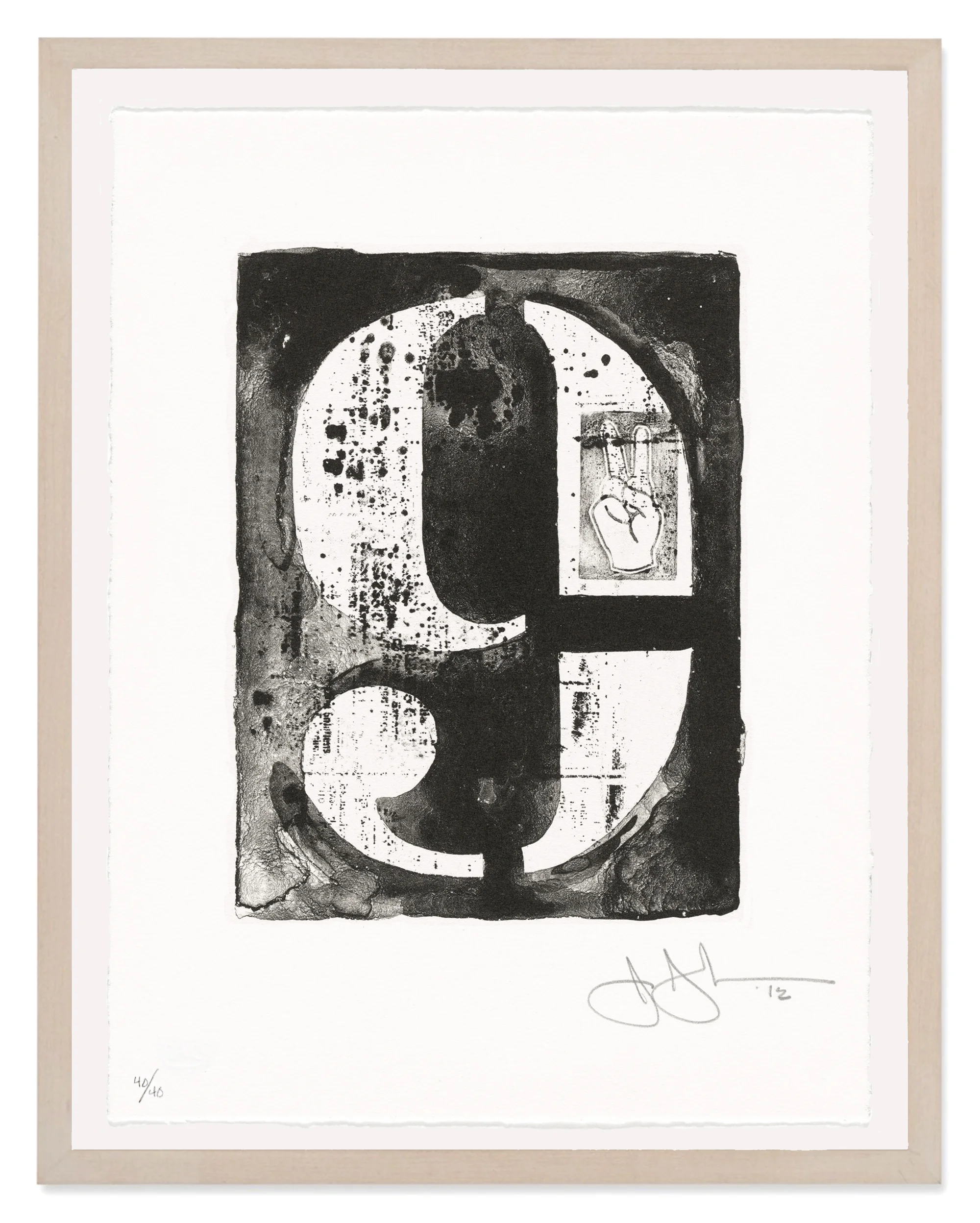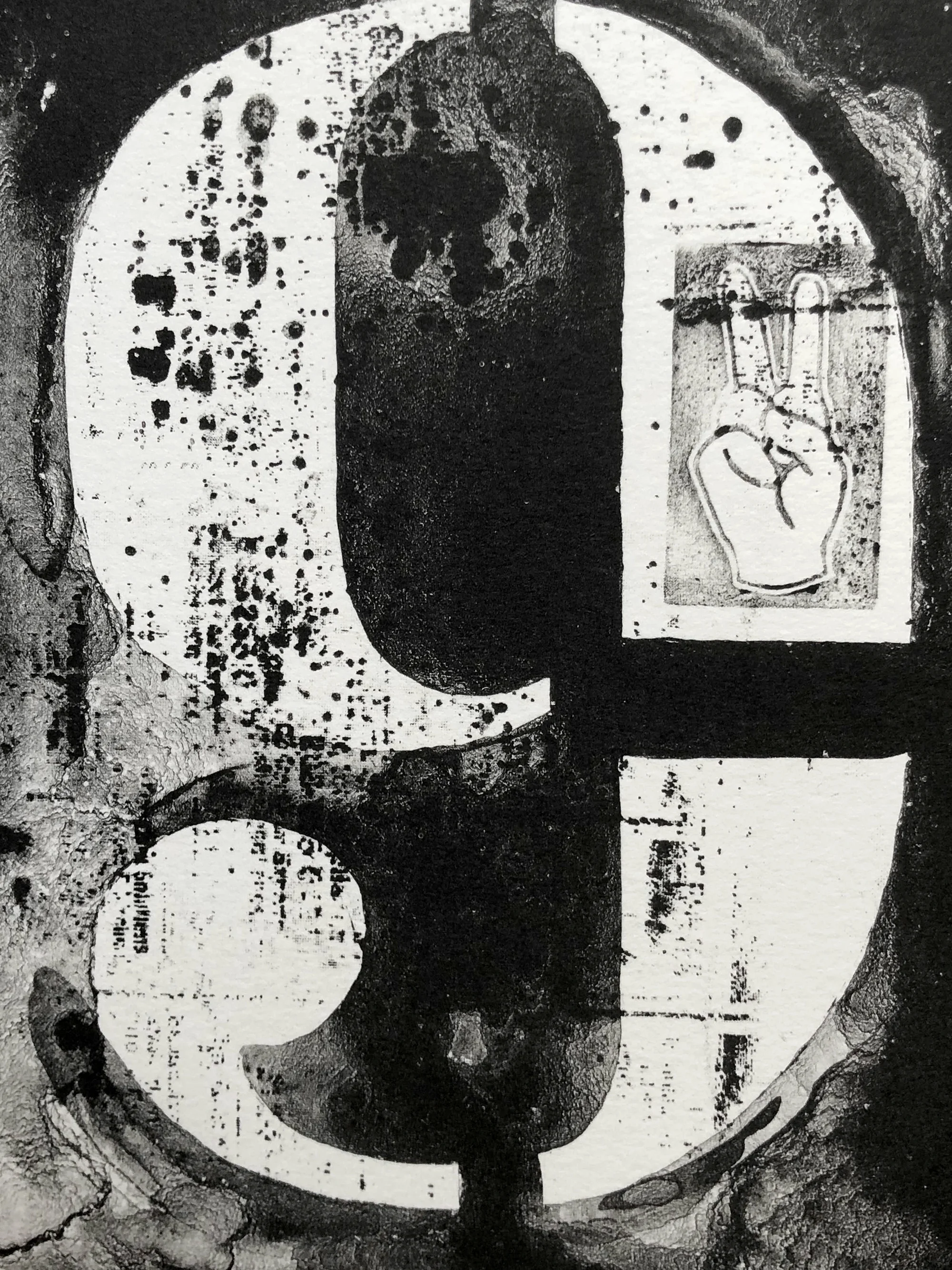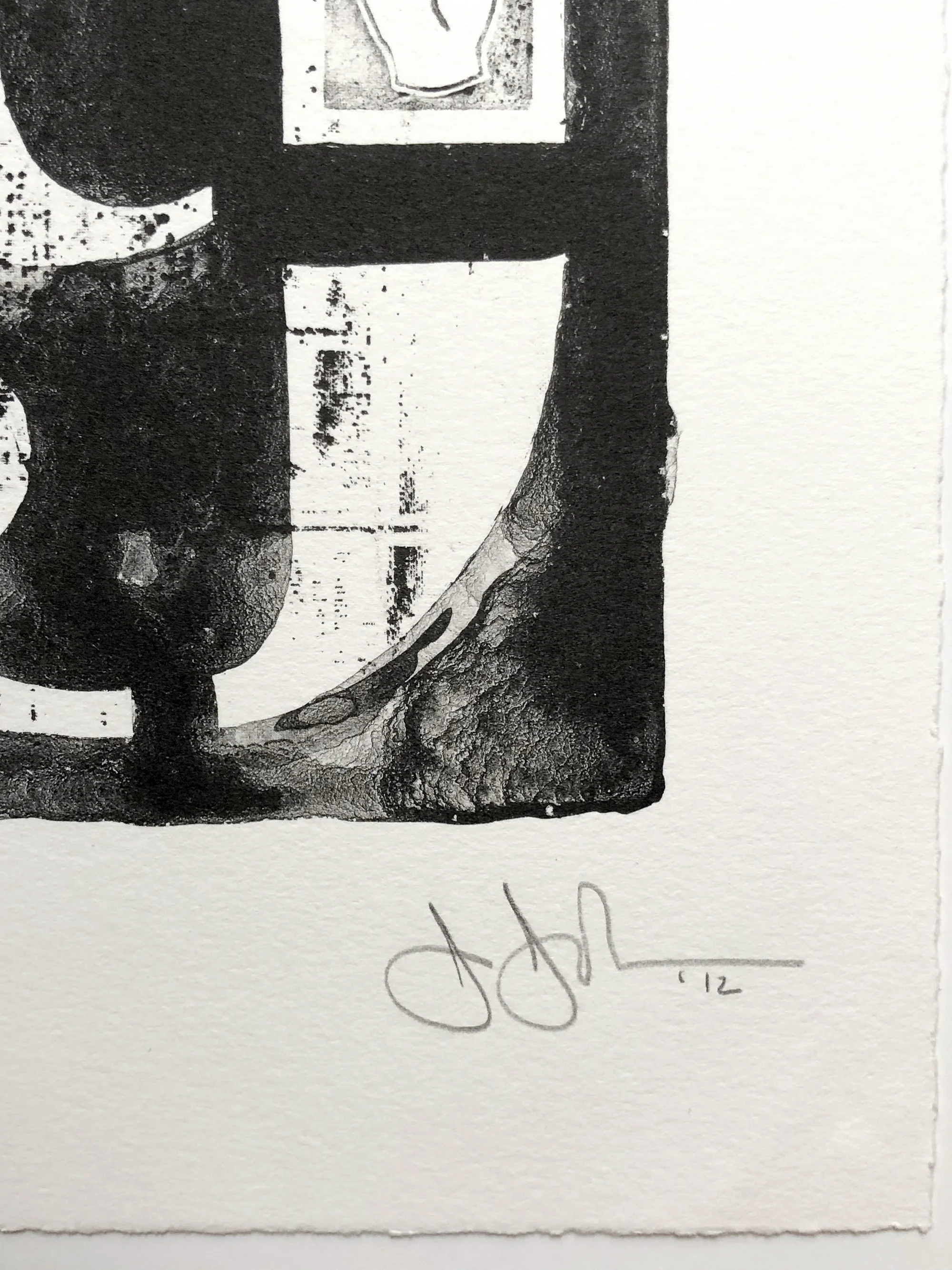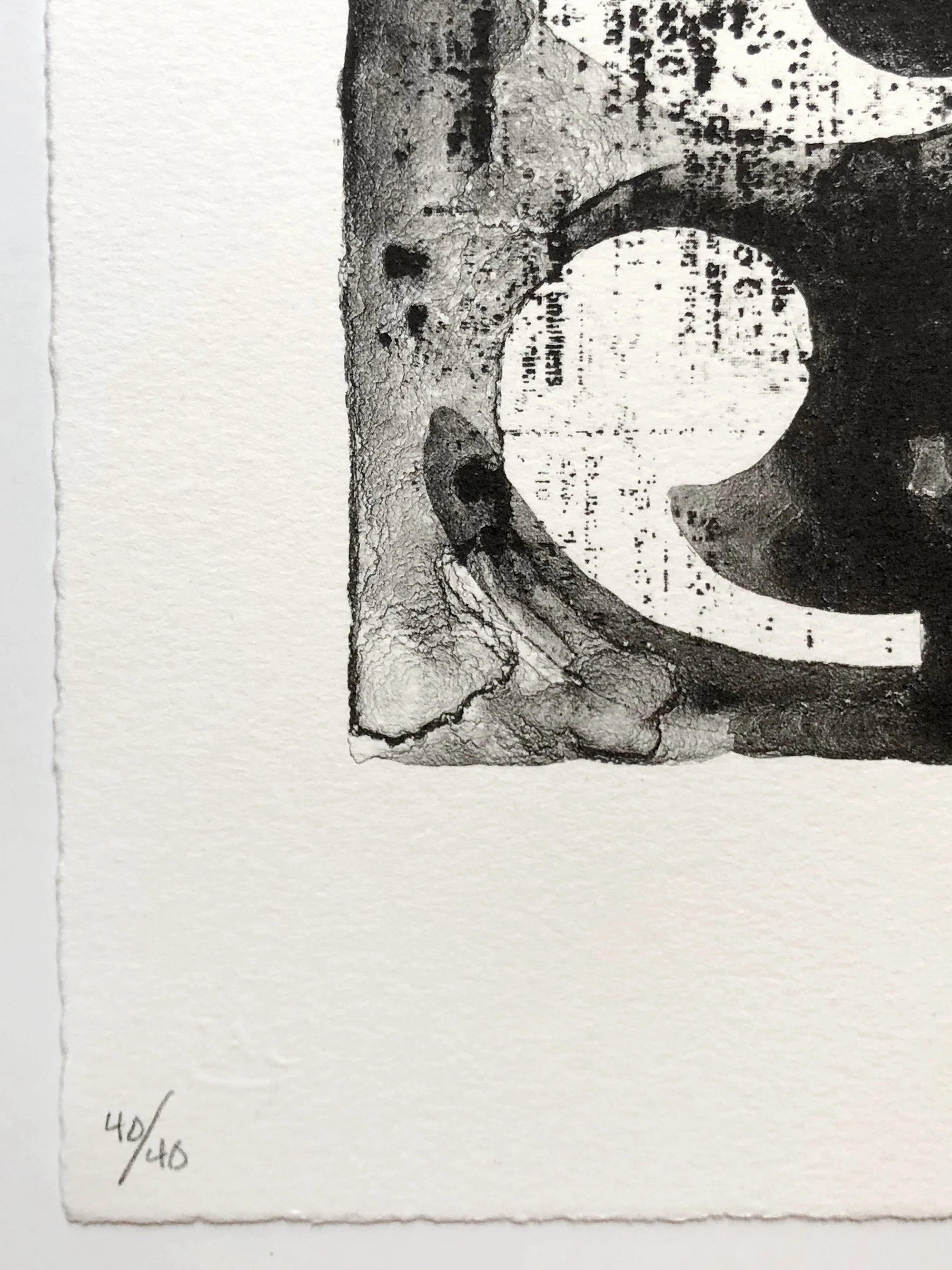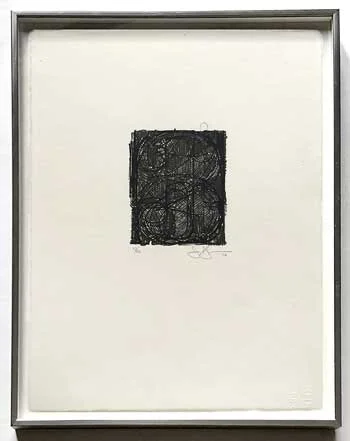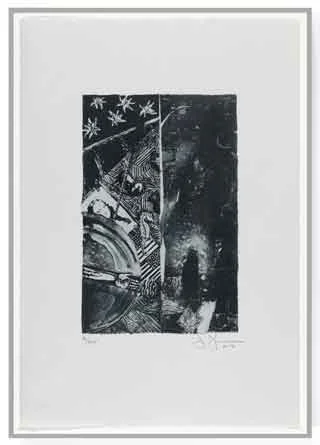Jasper Johns
Figure 9 (ULAE 321), 2012
Lithograph on Rives BFK paper
image: 7 × 5 3/8 inches
paper: 10 1/2 x 8 inches
frame: 12 x 9 1/2 inches
edition: 40 with 10 APs, 3 PPs and 1 TP
signed & dated in pencil "J Johns 12" lower right numbered in pencil lower left
published by Universal Limited Art Editions, Bay Shore, New York, with their blindstamp
printed by John Lund, Jason Miller and Bill Goldston
This is one of ten lithographs made by Jasper Johns to celebrate the 50th Anniversary of the Foundation for Contemporary Arts.
© 2024 Jasper Johns / Licensed by VAGA at Artists Rights Society (ARS), NY
image: 7 × 5 3/8 inches
paper: 10 1/2 x 8 inches
frame: 12 x 9 1/2 inches
edition: 40 with 10 APs, 3 PPs and 1 TP
signed & dated in pencil "J Johns 12" lower right numbered in pencil lower left
published by Universal Limited Art Editions, Bay Shore, New York, with their blindstamp
printed by John Lund, Jason Miller and Bill Goldston
This is one of ten lithographs made by Jasper Johns to celebrate the 50th Anniversary of the Foundation for Contemporary Arts.
© 2024 Jasper Johns / Licensed by VAGA at Artists Rights Society (ARS), NY
Provenance
Foundation for Contemporary Arts, New York
Private Collection, New York
Literature
To be included in the forthcoming update to: The Prints of Jasper Johns: A Catalogue Raisonne, ULAE, New York, Catalogue Reference ULAE 321.
Selected Museum Collections
Museum of Modern Art, New York
Walker Art Center, Minneapolis
